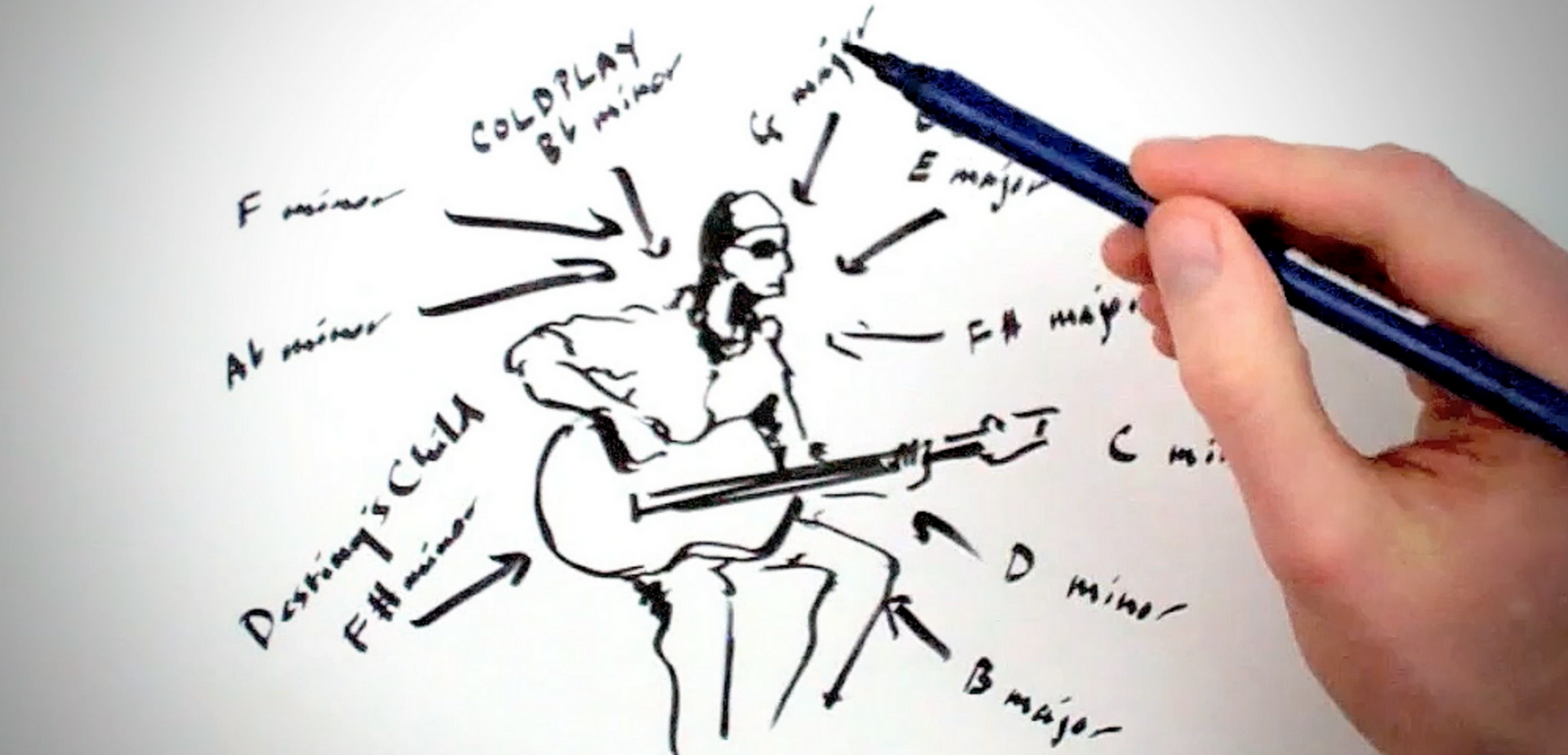
The fastest way to train your ear is to transcribe all music in the same key…
And to ignore the key of the original song.
Why?
Well the biggest obstacle that prevents most musicians from learning relative pitch, is that they continually change key.
They’ll play one song in one key, then another song in a new key, and so on.
And they’re even taught that this is a good thing to practice (playing in all keys has its place, but only much later on).
Attempting to learn 12 keys at the same time only keeps you equally unaware in all 12 keys – and stops you from ever mastering one key.
But when you line up every song in the same key, you realize that 95% of music is written using the same 7 notes and 6 chords.
Whether it’s a pop song, a country song, a TV commercial, or a Hans Zimmer film soundtrack – nearly all are built using the same few notes and chords – and the only thing changing is usually the key signature.
A Song’s Key is not very important:
The only reason we have multiple keys is so that a composer can find the best fit for their music, and the performers’ instrument ranges:
– If the singer can’t sing the top note, they’ll transpose it down a few keys.
– If the bass sounds too muddy, they’ll transpose it up a few keys – but that’s about it.
A piece of music essentially sounds the same whichever key you play it in – to almost all listeners – and having 12 keys just means 12 different ways to say the same thing.
For most musicians, changing keys all of the time only distracts them from seeing what’s actually important.
2 Benefits To Transcribing In One Key
Transcribing all songs in the same key has 2 main benefits:
1. It eliminates the note distractions of changing keys. No longer are you bombarded with every note and chord under the sun – F, F#, Gb, Bb min, A min, and so on.
2. Your Tonal Color Recognition builds up. An essential skill when playing by ear is learning the unique sounds of notes and chords within the context of the key – the unique sound of the root, the major 2nd, the minor 3rd, and so on.
All of the time you spend playing in one key, your memories of these sounds builds up – C sounds like the root every time, D sounds like the 2nd every time, and so on.

But as soon as you change to a new song in a new key, each note takes on a whole new sound within the new context – C now sounds like the 5th, D now sounds like the 6th, and all the memories that had been building up are quickly smudged away, and replaced with new ones.
But when you transcribe every song in the same key, each note has the same Tonal Color every time you play it. And your memory of these sounds grows stronger every time you play a note – and it’s impossible to backpedal.
And once you’ve truly ingrained these sounds in one key, you’ll then be able to notice them in the same locations of every other key. But first you must learn them in one key.
Prioritize Ear Training – Not Playing in all keys
Prioritize training your ear first – because ear training is king. And once you’ve made progress in training your ear within one key, it’s then a much simpler task to become fluent playing in other keys, which can be learned in a matter of weeks.
My Fixed Key Learning method is based on how I learned to paly music by ear – and it runs through all of my music teaching.
You can see this method in action in my free ear training video series:
Want to play songs by ear?
Watch my free 4-part video series and learn how: